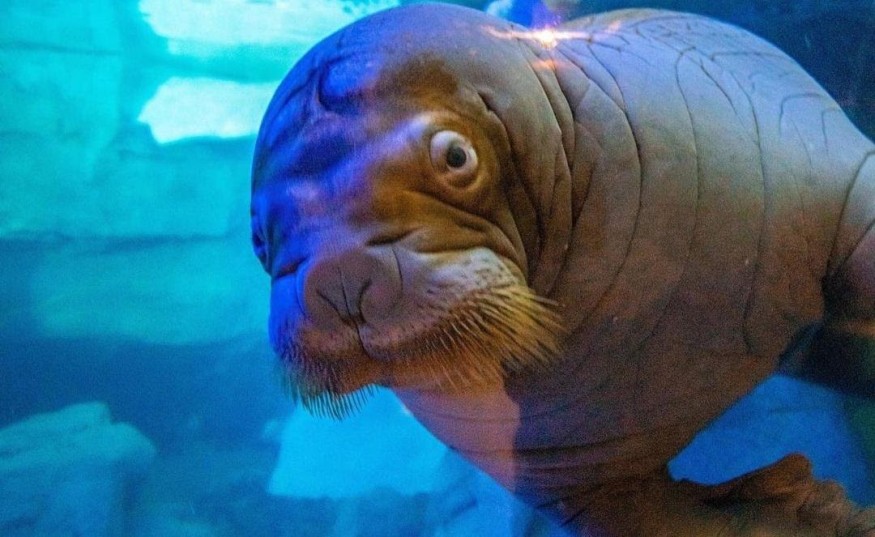
It's hard to find anyone who doesn't appreciate walruses, except for maybe the fish that make up a big part of their daily diet. Walruses also don't get as much attention as other Arctic animals. Various environmental groups and wildlife agencies have concluded that while polar bears might have an especially difficult time in the future due to warmer temperatures and habitat loss because of climate change, walruses should be able to adapt just fine.
However, walruses are still listed as "vulnerable" by the International Union for Conservation of Nature, although it has proven difficult for researchers to obtain an accurate population count to learn whether they are increasing or decreasing in numbers.
Whether the future is encouraging or bleak, it is still worth studying and learning as much as we can about Odobenus rosmarus. There are two subspecies of walruses, the Pacific and Atlantic, or Odobenus rosmarus divergens and Odobenus rosmarus rosmarus, respectively.
Walruses are considered one of the larger and more social species in the pinniped family, especially when stacked up against seals or sea lions. They weigh, on average, between 1,700 and 3,700 pounds. Adults grow about 7-10 feet long on average. Elephant seals are the only larger animal in this group.
Walruses are distinguished by the size of their tusks and whiskers in both females and males. The aquatic mammals have flippers that are useful for moving on ice and swimming through water. They usually live on ice floes fairly close to land.
When it comes to interacting with humans, they are generally considered mild, intelligent, and gentle unless provoked. They are too big to be kept as pets, but they seem to enjoy attention and being rewarded.
In the past, walruses were considered threatened mostly because their ivory was popular for jewelry, artwork, and accent pieces, so they were often hunted. Laws against this practice have steadied the population, but melting ice and oil exploration in the Arctic both remain concerns. That's why conservation efforts are so important and why SeaWorld parks such as San Diego play such a key role.
Research Today
Much of the research into walruses taking place today originates at the San Diego theme park and research center. It is currently home to five walruses, about a third of the 14 walruses found in accredited aquariums and zoos in North America. As of late 2020, they include Dozer, a male weighing in at more than 3,600 pounds, plus four females, Basilla, Chou Chou, Kulu, and Unuq. At the park, guests can learn about them and their value to the ecosystem.
SeaWorld San Diego also regularly creates partnerships with universities for humane research purposes. These studies can help advance knowledge of these interesting creatures, including their behavior and biology. They can also teach us more about the delicate balance in the waterways and how it can be both disrupted and repaired.
Being able to work with the SeaWorld walruses for research purposes is also easier and more affordable for institutions with limited academic resources, as opposed to launching a research expedition to the Arctic, which would involve cold-weather gear, boats, helicopters, support staff, and more.
Schools involved in walrus research include UC Santa Cruz and Oregon State University. Recent students have looked at the levels of walrus hearing, not just if they can hear sounds higher or lower than the human range of hearing but also how sensitive they are to non-natural noises. For instance, sounds from ships, airplanes, helicopters, or drones could move quickly through the water and possibly disrupt walrus communication. If more natural resource exploration occurs in walrus territory or climate change allows more nautical traffic, unfamiliar noises could cause fear and anxiety, possibly disrupting feeding and migration.
In another recent study, researchers looked closer at overall walrus health and growth rates, based on the growth of their whiskers and what information is included in them, such as hormones, toxins, and more. This information could make future walrus studies easier, and the study would have been difficult to conduct safely and effectively in the wild.
As with all of the animals at SeaWorld, the walruses are provided with optimal care by an expert team of veterinarians, animal care specialists, and more. All of the parks and research facilities have a goal of science to support conservation. This includes research efforts by its own staff, as well as research partnerships with schools, zoos, and more. In some cases, rehabilitation can take place. In other cases, animals are used to educate the public.
The company also supports the SeaWorld Conservation Fund, which has allocated more than 1,200 research and conservation projects worldwide.
Some of these projects include efforts to save plant and animal species from pending destruction, such as fish and plants in coral reefs. It also has an active breeding program for exotic fish, which reduces the need to harvest fish for research purposes. SeaWorld also maintains an active animal rescue program and comes to the aid of injured or orphaned animals 365/24/7 with the goal of rehabilitating and returning the animals to the wild. To date, SeaWorld has rescued more than 37,000 animals.
© 2025 NatureWorldNews.com All rights reserved. Do not reproduce without permission.





